What if you could understand how your customers are feeling, thinking, and how they perceive your business — without a crystal ball? Although it may sound impossible, customer data analysis provides a window into your customers’ behaviors and preferences, if you know how to use it.
CRM analytics makes this possible by consolidating critical customer data in one place and turning it into actionable insights. When teams use analytics strategically, they can improve relationships, streamline sales cycles, and strengthen loyalty — all while letting AI-powered tools like monday CRM automate the heavy lifting.
Try monday CRMWhat is CRM analytics?
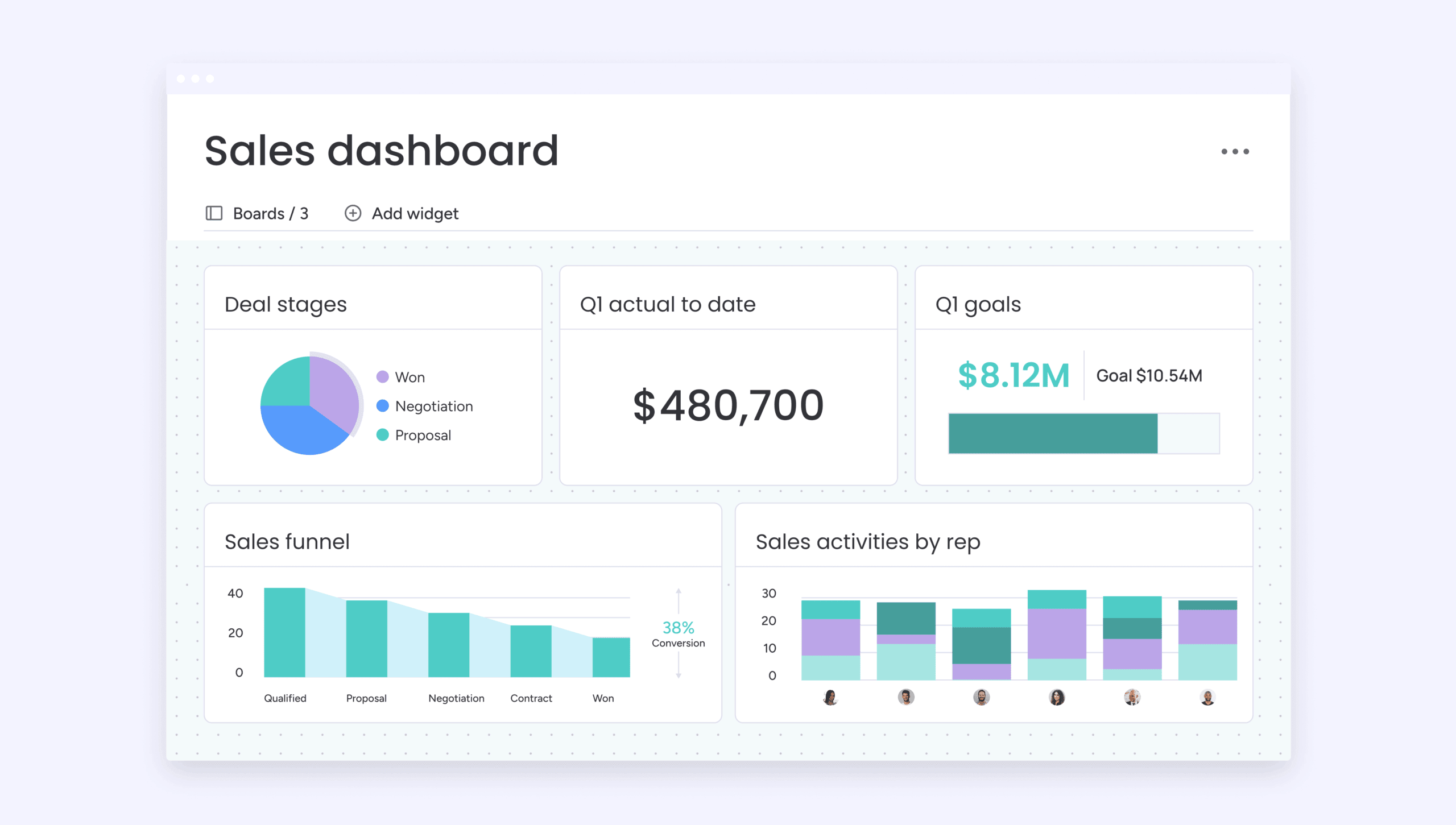
CRM analytics is the process of collecting, organizing, and analyzing customer data within a customer relationship management (CRM) platform to uncover insights into customer behavior.
Using tools like reports, dashboards, and predictive analytics, businesses gain a clearer view of their performance and areas for improvement. CRM analytics platforms also leverage AI and machine learning to spot patterns, predict customer actions, and automate next steps, delivering insights far beyond what manual reporting can provide.
By continuously gathering and examining data, CRM analytics helps teams across sales, marketing, and service make smarter decisions and improve the customer experience.
Why businesses need customer data analysis
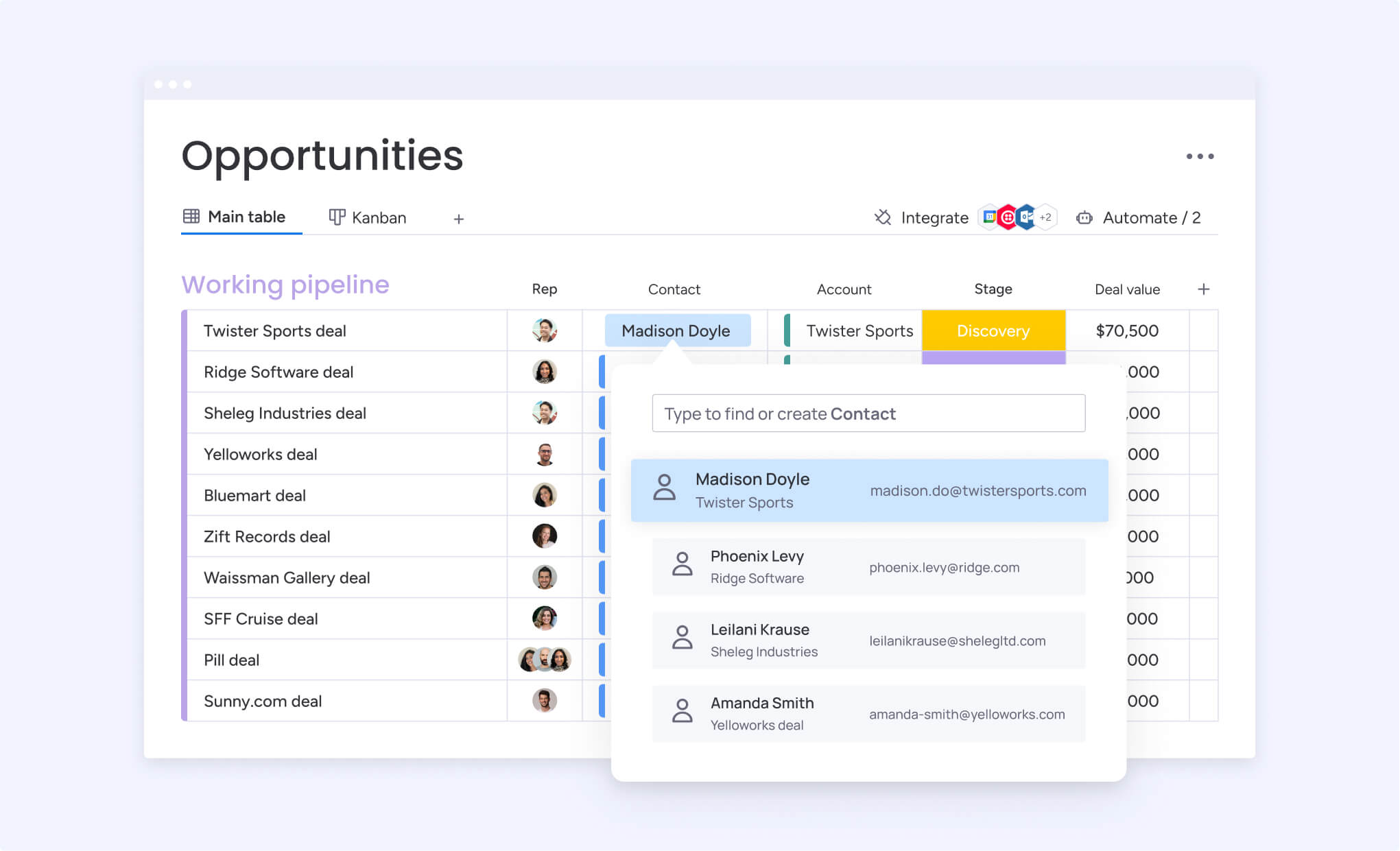
Customer analytics are just as important as financial reports when gauging your business’s health. Analyzing customer data helps you understand who your customers are, what they want, and how satisfied they feel with your company or product.
Companies need CRM analytics to gain insights into what’s happening behind the scenes of their sales. Thanks to customer analytics, companies can:
- Understand customer behavior, including how they interact with products and services, what factors influence purchasing behavior, and what drives decisions
- Improve the customer experience by identifying what needs improvement, such as product features, customer support, or marketing messages
- Increase customer loyalty through identifying the most valuable customers and creating targeted retention strategies to keep them engaged
With AI often built natively into CRM analytics, businesses can move from descriptive reports (what happened) to predictive insights (what’s likely to happen next).
Real-world example: Zurich Insurance
Zurich Insurance Group recently transformed its customer experience with an AI-driven CRM system that centralizes policy data and uses machine learning to recommend the right products. The impact? Service times dropped by more than 70%, while agents delivered faster, more personalized support. Today, you don’t need to build a custom CRM to see results like these — platforms such as monday CRM make predictive analytics and personalization accessible without a huge IT lift.
The benefits of CRM analytics for growth
CRM analytics can transform every area of your organization. Whether your goal is boosting sales, improving customer service, or building more effective marketing campaigns, having a steady flow of customer journey data analytics improves efficiency and decision-making across the board.
Here are some key benefits of using customer data analytics:
Data-driven decisions
Analytics turn raw data into actionable insight. By analyzing historical performance, teams can validate strategies, spot opportunities, and make smarter decisions based on facts rather than guesswork. This creates a reliable foundation for both short-term moves and long-term growth planning.
Pipeline and conversion improvements
CRM analytics reveal how prospects move through the sales funnel — and where they stall. By identifying bottlenecks, sales teams can refine playbooks, optimize handoffs, and improve pipeline management. This not only accelerates sales cycles but also increases conversion rates and revenue opportunities.
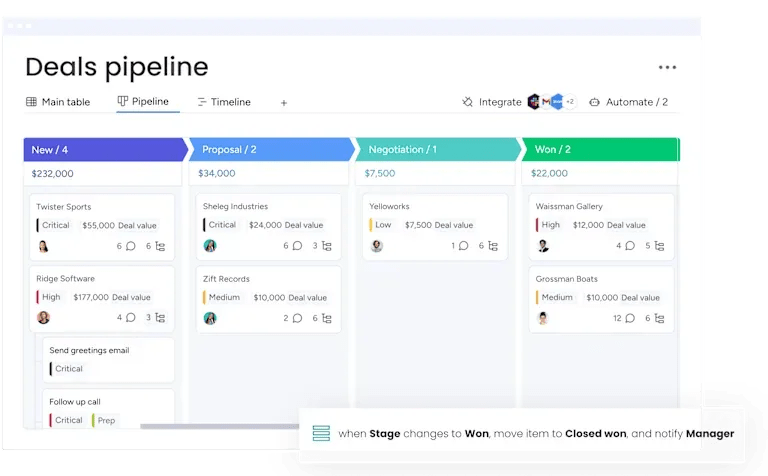
Customer experience & loyalty gains
Customer data analytics shed light on which product features, services, and support interactions matter most to your customers. Service teams can use these insights to establish more proactive support practices, while marketers can fine-tune campaigns to better resonate with key segments. Over time, this leads to stronger retention, higher satisfaction, and deeper brand loyalty.
Hyper-personalization through CRM analytics
Personalization is one of the most powerful advantages of CRM analytics, and more than three-quarters of business leaders believe personalization was instrumental in their business’s success, according to Statista data.
By uncovering behavioral patterns and preferences, businesses can deliver messaging, offers, and content tailored to individual customers or segments. This creates trust, boosts engagement, and increases the likelihood of repeat business.
Smarter resource and campaign management
Beyond sales and service, CRM analytics also help businesses manage resources and marketing spend more effectively. By tracking workforce performance and campaign ROI, teams can forecast future needs, target the right audiences, and allocate resources where they’ll have the biggest impact.
Key metrics to track in your CRM analytics dashboard
There are a lot of different metrics businesses can track to gauge progress and performance. To focus on improving customer relationships and enhancing the customer experience, here are some key customer data analysis metrics you should consider tracking through your CRM.
Customer lifetime value (CLV)
Customer lifetime value (CLV) measures the total revenue a company can expect to earn over the lifetime of a given customer relationship. It’s one of the best ways to link customer success efforts and revenue. You can calculate this by multiplying what a customer typically spends each month by how long they stay with you.
So, for example, if someone spends $100 monthly and sticks around for 2 years, their CLV is $2,400.
Customer retention rate (CRR)
Customer retention rate (CRR) measures the percentage of existing customers your business retained over a given period, such as from one month to the next, between quarters, or year over year.
If you started January with 1,000 customers, gained 150 new ones, and ended with 950 total customers, your retention rate would be 80%.
Customer retention cost (CRC)
Customer retention cost (CRC) measures the amount of money your business spends on retaining customers. It tells you whether your customer success efforts are effective.
To calculate this, divide your total retention spending by the number of customers you kept. If you spent $50,000 on retention programs and kept 800 customers, you’re paying about $62.50 per retained customer.
Customer churn rate (CCR)
Customer churn, also known as customer attrition, defection, or turnover, is the opposite of customer retention and measures how many customers you lose over a given period.
If you lose 50 customers out of your starting 1,000 in a month, that’s a 5% monthly churn rate, which translates to losing 1 in every 20 customers each month.
Customer satisfaction score (CSAT)
Customer satisfaction score (CSAT) measures how customers rate their experience with your company based on your choice of questions and rating scale.
For example, if 425 out of 500 survey respondents say they’re satisfied with your service, you’d have an 85% CSAT score, which is a pretty solid indicator that most customers are happy with what you’re delivering.
Net promoter score (NPS)
Net promoter score (NPS) is a type of customer feedback analysis that measures customer responses on a sliding scale to a one-question survey, such as: “On a scale of 1-10, how likely are you to recommend [business/product/service] to a friend?” Responses are classed as follows:
- Detractors = 0 to 6
- Passives = 7 or 8
- Promoters = 9 or 10
So, for example, let’s say you polled 500 customers and they responded like this:
- 300 gave a 9 or 10 (Promoters = 60%)
- 100 gave a 7 or 8 (Passives = ignored in calculation)
- 100 gave 0–6 (Detractors = 20%)
The NPS would be calculated as 60% − 20% for a +40 NPS.
Rate of renewal
For businesses that offer subscription-based services, such as software, the rate of renewal shows how many customers are staying after contracts expire. This helps assess a company’s growth and ability to retain existing customers.
If 340 out of 400 customers whose contracts are up choose to renew, you’re looking at an 85% renewal rate, suggesting most customers see enough value to stick around.
How different teams use customer analytics
It may seem like CRM analytics are just for sales teams, but every revenue-driving function can benefit. From acquisition to long-term retention, sales, marketing, and service teams use customer data to improve processes and deliver better experiences. Even product development can tap into analytics to shape features and meet customer needs.
Let’s break it down a bit further by looking at how customer analytics are used in different departments.
Customer analytics for sales
- Understand the source of new leads and track customer acquisition data and costs
- Improve sales rep performance across the entire sales cycle
- Learn where and why customers churn to improve retention
- Identify cross-selling and up-selling opportunities
- Build strong sales strategies through customer segmentation
Customer analytics for marketing
- Create stronger customer messaging for each funnel stage
- Build customer profiles to better target campaigns
- Measure campaign ROI and attribution across the full customer journey
- Personalize content based on customer journey stage
- Track brand awareness and sentiment over time
Customer analytics for service
- Identify common customer issues that impact retention
- Improve response times to enhance customer satisfaction and loyalty
- Predict which customers might need proactive support
- Track first-call resolution rates
- Identify training opportunities for support staff
Customer analytics for product development
- Understand customer preferences across different lifecycle stages
- Prioritize the development roadmap based on customer needs
- Track feature adoption rates and usage patterns
- Identify gaps in the current product offering
- Monitor product performance metrics post-launch
Best practices for a data-driven customer strategy
While tracking the metrics we measured above is a great start, data without a strategy won’t give you the results you’re looking for. By implementing a few key strategies, you’ll be able to not only improve the data you collect but also make full use of it to grow your business.
Here’s a look at some best practices to implement for stronger customer data analysis:
- Focus on a few core metrics: There are dozens of metrics you can track, but taking your short and long-term company goals into account, focus on a select few to track over a predetermined period before expanding to add new ones.
- Segment customers for targeted insights: Generic analysis of all your customers often misses nuances. Break down your customer base by demographics, behavior, lifecycle stage, value, or other relevant criteria to uncover patterns and opportunities relevant to specific groups.
- Clean and consolidate data: Unifying data is essential; otherwise, your source data may be filled with inaccuracies, irrelevant information, and duplicate data.
- Set a CRM reporting and analytics cadence: Set up automated dashboards and establish consistent review schedules so insights become part of your team’s regular decision-making process. This prevents important trends from being missed and ensures data insights influence business strategies.
- Use AI to optimize data: AI is your friend when it comes to customer data. There are so many ways to incorporate AI to optimize sales and customer relationships, including data-based personalization, sales forecasting, and more.
- Automate data collection: Using tools such as data analytics systems or CRM software helps streamline customer analytics efforts and save time for more strategic tasks.
- Combine quantitative data with qualitative feedback: Numbers tell you what’s happening, but customer feedback tells you why. Don’t forget about surveys, support tickets, and direct customer conversations that allow you to add context to your analytics and validate what data shows.
Pro tip: A platform like monday CRM can help consolidate and clean up data automatically so that you can rest assured that the outcomes are reliable and accurate. Plus, with the right CRM automation platform, you can set it and forget it, making it easier to track key metrics and progress over time.
How to choose the right CRM analytics software for your business
CRMs differ in their strengths and abilities, so it’s important to know what you’re looking for before picking one. If you’re in the market for a CRM analytics platform, there are a few deciding factors you should take into account before settling on a solution. Here are some things to consider that will make choosing the right platform a smooth affair.
Goals and strategic priorities
First things first, you need a solid grasp of what your goals are in general and for using a CRM. Once you understand where you want to go, it’s easier to find the right platform to map out your journey. For example, if your goal is to use analytics to increase sales, you’ll want to look for a platform that offers robust lead scoring, pipeline forecasting, and conversion tracking capabilities.
Growth and scalability needs
Do your future plans for your company include launching new products, expanding into new locations, or doubling in size by next year? If so, these are all things to take into account when selecting a CRM. You want a platform that can scale as your company expands so that you don’t find yourself outgrowing a limited system. Look for a CRM that’s easy to use so that onboarding is quick and easy, and that offers plenty of integrations so that you can easily connect other work tools you may need.
Deployment and mobility requirements
Do your team members work remotely, or does everyone work in the same office? Some CRMs offer cloud platforms, while others are on-premise. If your team members work remotely, or even if you want to give sales reps the ability to update their CRM on the go, then a cloud CRM might be your best bet.
Budget and pricing structure
Don’t overlook upfront costs in the total cost of ownership. Budget for things like implementation, training, and ongoing maintenance so that there are no surprises. Some CRMs charge per user, while others have tiered pricing based on features. Additionally, don’t forget to factor in potential costs for data migration, customizations, and integrations that might be essential for your business.
Harnessing the power of monday CRM analytics
With monday CRM, you can get closer to your customers, automate repetitive work, and organize your data in one place. As an AI-powered CRM, the platform offers users plenty of opportunities to optimize data collection and analysis to make the most of the information you already have. From predictive analytics to deep personalization, monday CRM puts your data front and center and uses it to improve customer relationships at every touchpoint.
Case study: How Cenversa boosted sales and performance with mnoday CRM
Cenversa, an Australian pet care group, was strugging with inaccurate data and an outdated CRM system. After implementing monday CRM, Cenversa was able to centralize its customer data and make more strategic business decisions based on real-time sales and territory data. With reps spending less time chasing down accurate data, the company saved an annual 3,500 hours of manual work by automating tasks like data entry, reporting, and customer follow-ups.
Here’s a closer look at some of the features in monday CRM that help teams put data first to work smarter.
Plan ahead with predictive analytics and sales forecasting
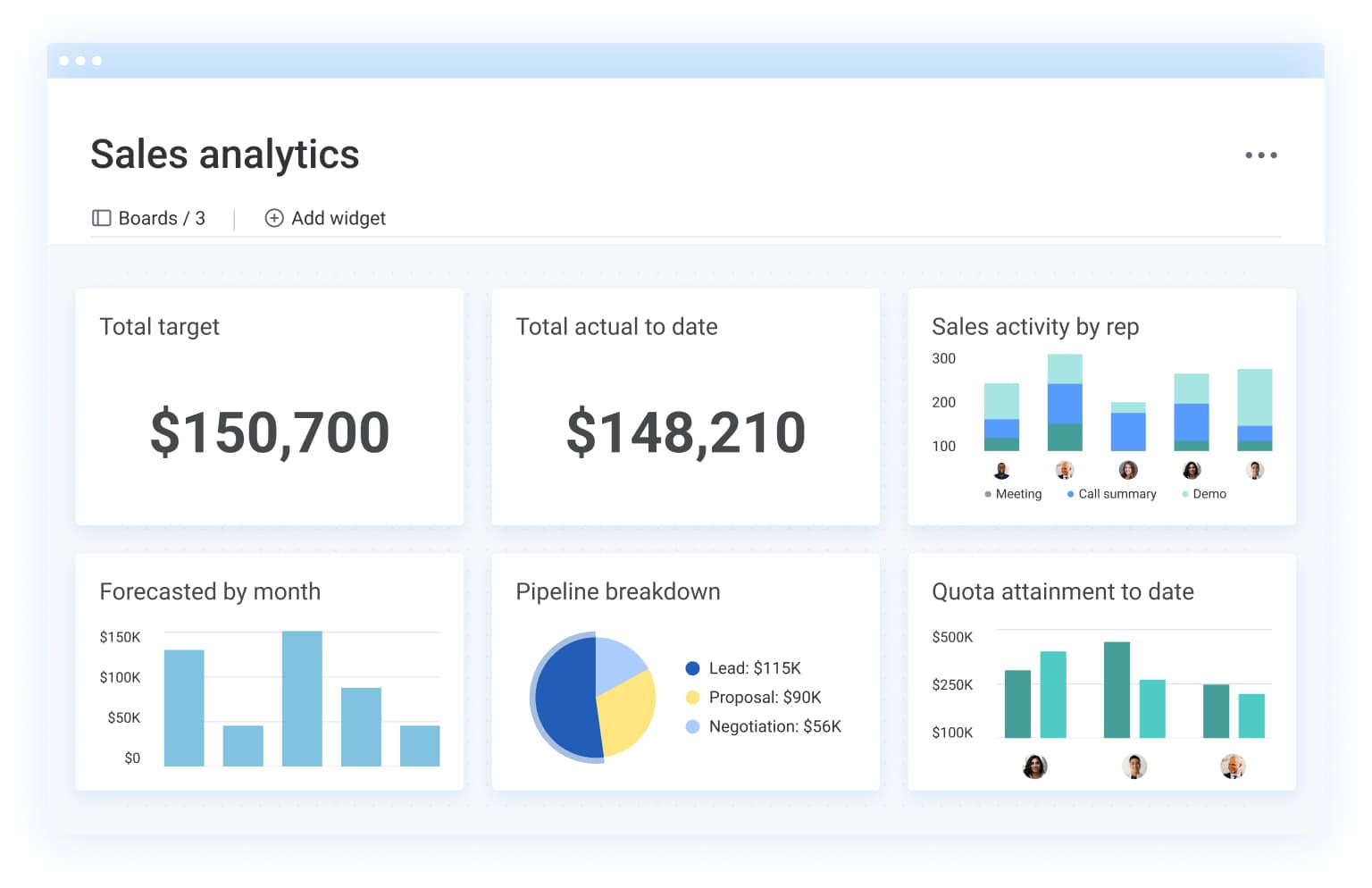
With monday CRM, teams get access to predictive analytics and forecasting features that help them turn data into a plan of action. By analyzing historical trends and patterns in user behavior, monday CRM can predict which deals in a pipeline are likely to close or fall through, allowing sales teams to focus their time and energy in the right place.
Optimize marketing campaigns with personalized insights
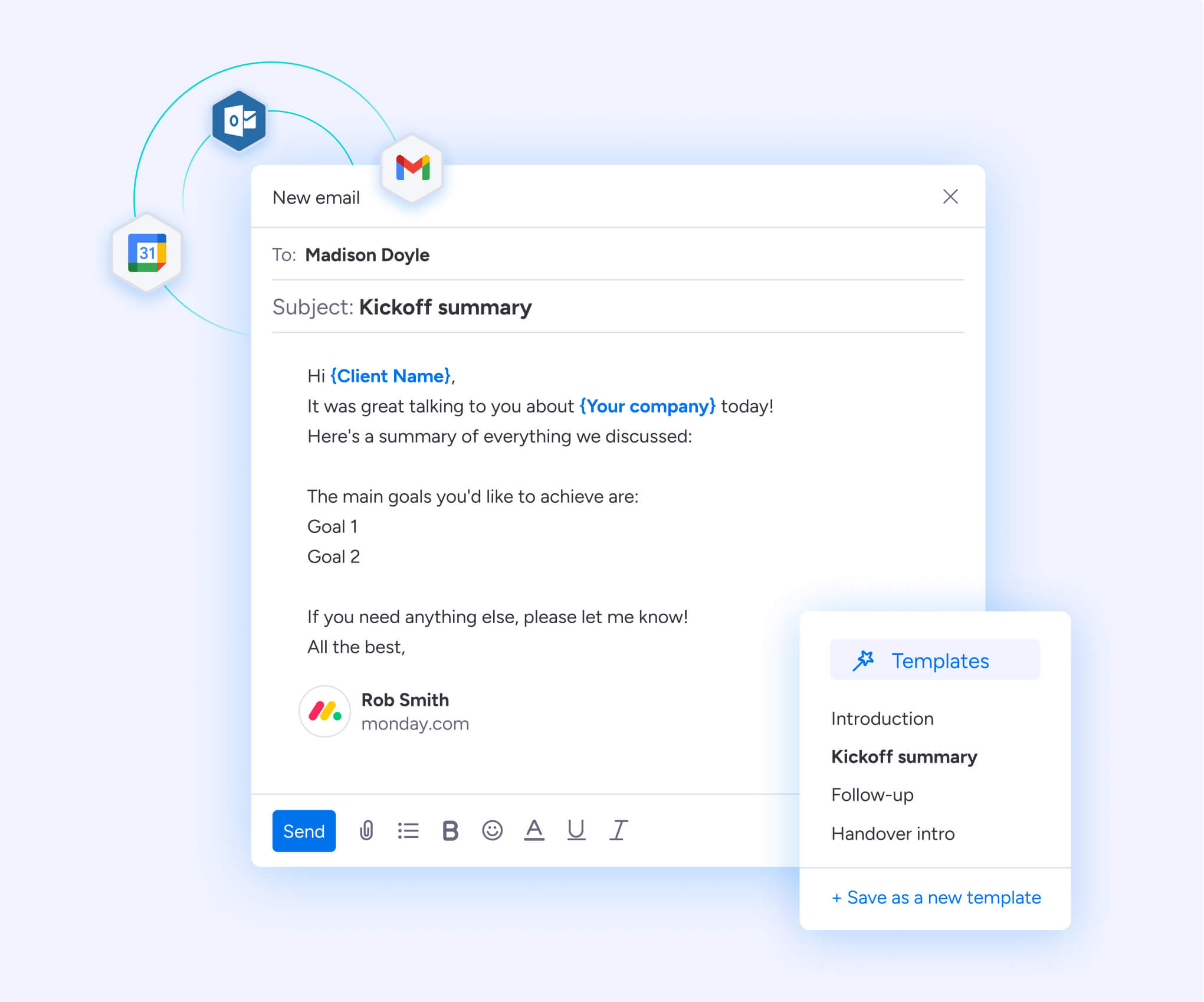
Marketing teams can make the most of the data in monday CRM to use real-time insights to improve campaigns. By looking at behavioral patterns, preferences based on segments, and engagement history, teams can personalize email and marketing messaging to fit what clients want to see, delivering timely campaigns that resonate.
Automate manual tasks for quicker pipeline management
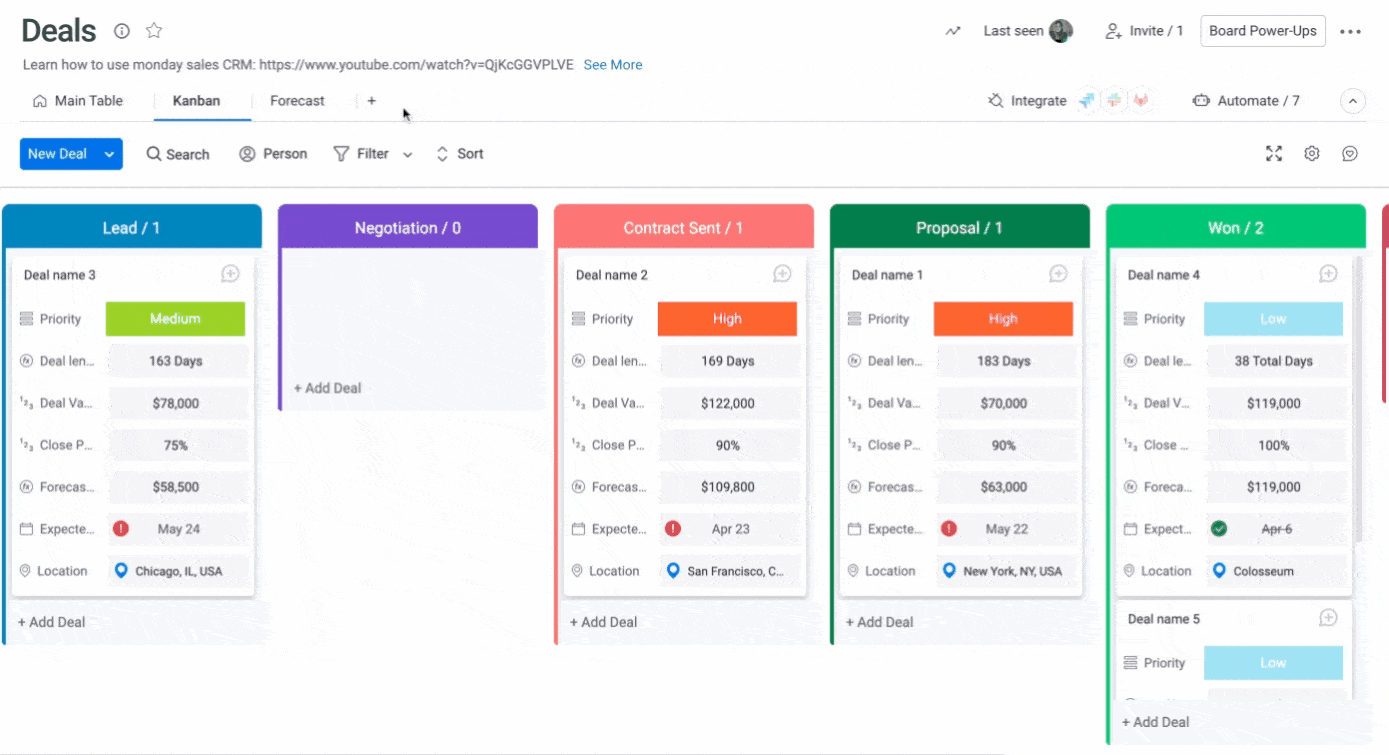
The platform makes it simple to create AI-powered custom automations to put your pipeline on autopilot so that everything flows smoothly. From automating follow-ups, status updates, and even data extraction from web forms and uploaded documents, sales agents don’t have to spend a lot of time managing their pipeline and can instead focus more on nurturing relationships with high-priority accounts.
Analyze customer sentiment to stay one step ahead
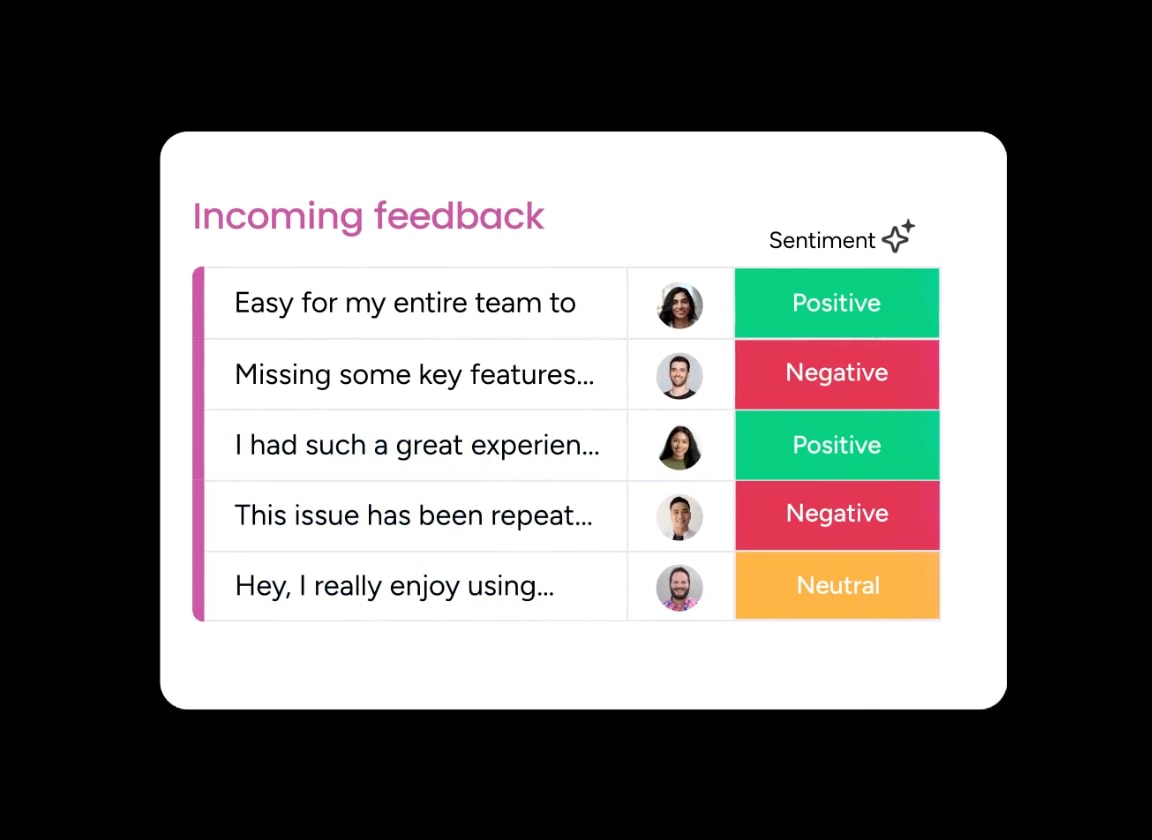
Teams can use monday CRM’s sentiment analysis feature to get insights into how a customer is feeling. Through using AI to analyze chat histories, emails, meeting summaries, and call logs, monday CRM can determine if a customer or prospect is feeling positive or negative so that sales and support teams can proactively get involved with immediate solutions.
Master customer data analysis with the right CRM
Streamlining customer data analysis will help you understand who your customers are, what they want, how they behave, and how satisfied they are with your products or services. If you want to stay ahead of the competition by creating a memorable end-to-end customer experience, it’s important to listen to the data and use it to inform strategies in your company.
Using a solution like monday CRM helps you make the most of the data you have while digging deeper to give you insights into customer behavior, sentiment, and preferences so that teams can forge deeper client relationships that form the foundation of your business.
Try monday CRMFAQs
What is the difference between CRM and data analytics?
A CRM is the system that stores and manages all your customer information, like contact details, purchase history, and interactions. Data analytics is what you do with that information to uncover patterns and insights. Essentially, a CRM collects the data, and analytics helps you make sense of it to improve performance and grow your business.
Which CRM is best for advanced marketing analytics?
While a lot of CRM systems on the market offer advanced marketing analytics, monday CRM stands out for its robust AI automation, intuitive interface, and seamless integration with marketing tools. Through visual CRM analytics dashboards, monday CRM makes complex data easy to understand, while features like lead scoring and AI email writing help marketing teams optimize their strategies effectively.
What are some key advanced technologies behind modern CRM analytics?
Modern CRM analytics leverage artificial intelligence for predictive insights, machine learning to identify customer behavior patterns, and automation to trigger actions based on data. Natural language processing is another technology that advanced CRM analytics systems use to get insights into customer sentiment and understand customer behavior from digital interactions. All of these technologies work together to turn raw customer data into actionable business intelligence.
Can small businesses benefit from CRM analytics?
Of course! Small businesses stand to gain a lot from CRM analytics since they need to maximize every customer relationship. Even basic analytics can help identify your best customers, predict when someone might leave, and spot sales opportunities. Many CRM platforms offer affordable, user-friendly analytics that don’t require a lot of technical skills.
How do you measure the success of a customer acquisition strategy using CRM data?
You can measure the success of your customer acquisition strategy by tracking metrics like cost per acquisition, conversion rates at each funnel stage, and customer lifetime value of newly acquired customers. Compare lead sources to see which channels bring the highest-quality prospects, monitor how long it takes to convert leads, and measure retention rates to ensure you’re acquiring customers who stick around.
How does CRM analytics compare to tools like Salesforce or Tableau?
Salesforce CRM Analytics is a popular option with strong integrations inside the Salesforce ecosystem, while Tableau is primarily a business intelligence and data visualization platform. The key difference is that CRM analytics tools — like monday CRM — are purpose-built to capture, analyze, and act on customer relationship data in real time. Tableau excels at visualizing complex datasets, but a dedicated CRM analytics platform ties those insights directly to sales, marketing, and service workflows.
 Get started
Get started 


